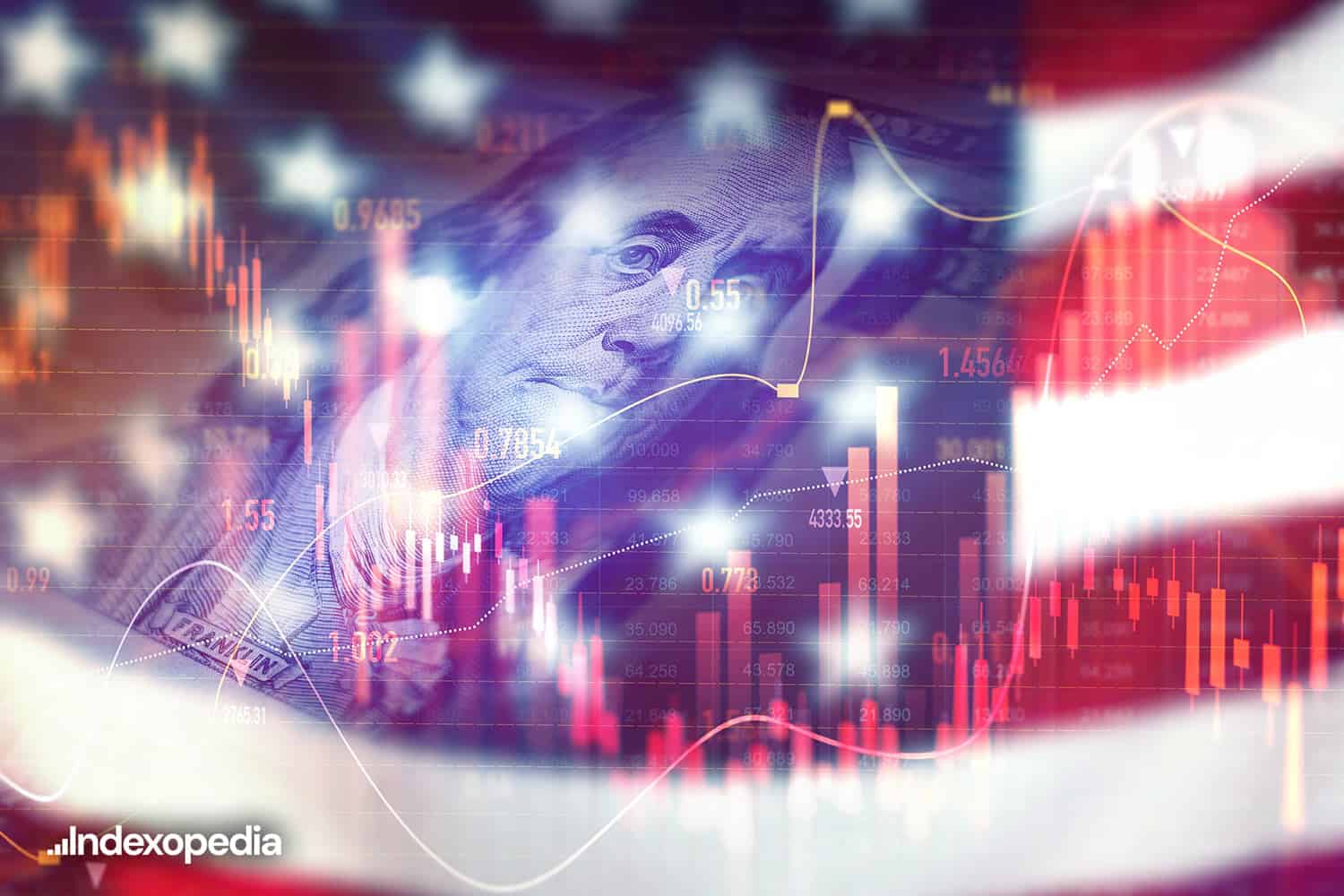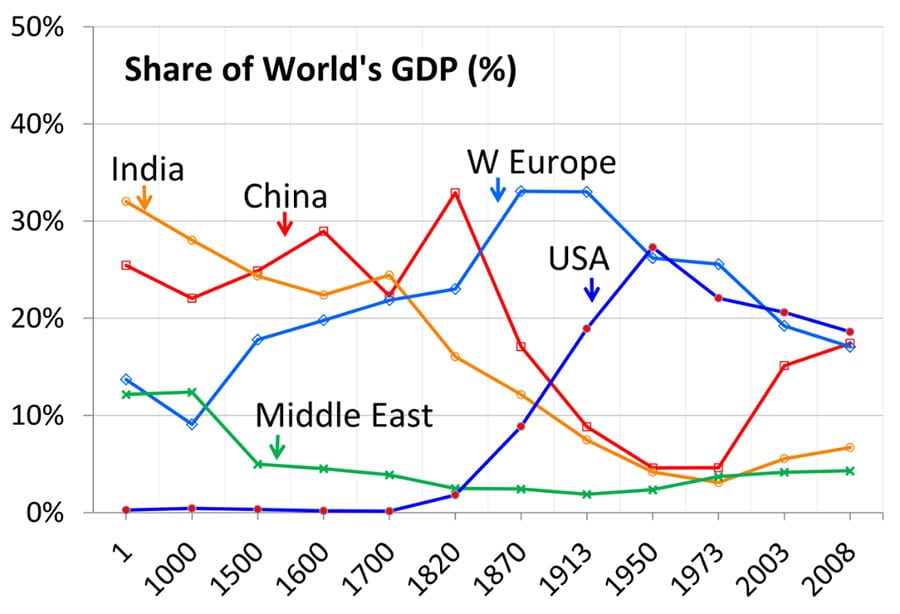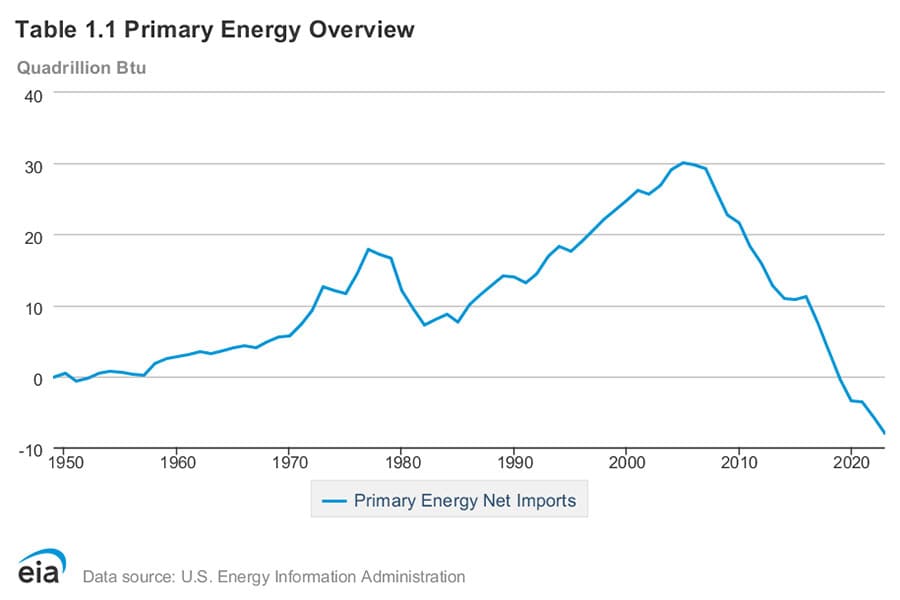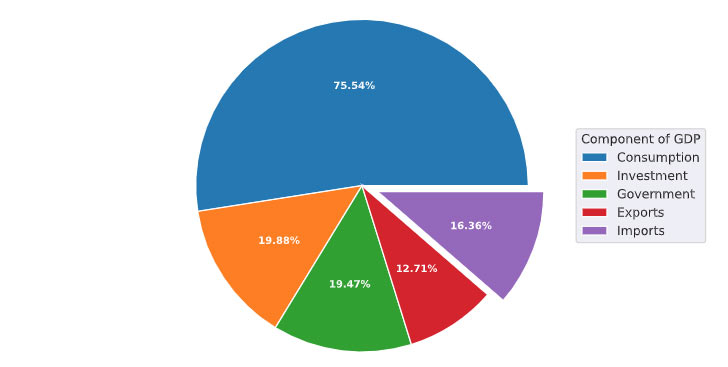

While inflation still looms large in the minds of many Americans, compared to the rest of the developed world the US economy has bounced back stronger from the COVID pandemic. Some of this is due to the substantial 2020 stimulus bill, but there are several other characteristics that contribute to the USA’s longstanding and ongoing economic success.

It can be difficult to say with absolute certainty, but the USA has likely been the world’s largest economy since the 1890s. After recovering from the Civil War, the US economy grew rapidly. Technologies of the Industrial Revolution like railroads, steam engines, and telegraphs, contributed to the accelerating pace of American economic life, leading to the economy surpassing even the British Empire.
In just over 100 years after its founding, the United States became the largest economy in the world. The below chart shows how the USA’s GDP rivaled all of Western Europe following World War II:
The global contribution to world’s GDP by major economies from 1 AD to 2008 AD according to economist Angus Maddison’s estimates.
It is also worth noting China’s return as an economic powerhouse after a nearly two century hiatus. While the United States’ economy isn’t as singularly dominant as it was in the 1950s, the sustainability of American economic growth has kept the USA in the top spot.
Location is Key
Vast natural resources, expansive territory, and the British legacy of a strong legal system and property rights, set the young country up for success. America’s geographic characteristics also play a role, with easy access to two oceans and the Panama Canal fostering global trade. Being at arm’s length from the bloodiest conflicts in Europe and Asia also doesn’t hurt.
Unlike many other countries, the US has become increasingly energy independent due to its shale oil revolution, providing a strategic economic advantage. While US energy is still deeply intertwined with global markets, this degree of energy independence has allowed the modern US to avoid energy crises like those that plagued the 1970s. American energy dependence peaked in 2005, the below chart shows how the USA’s efforts for energy independence has accelerated over the past 20 odd years, across three presidential administrations:
Land of the Free Markets
While the Great Depression brought significantly more government intervention and regulation into the American economy, compared to many developed nations the American system still tends towards a “laissez faire” (hands-off) economic approach which prioritizes limited government intervention and promotes competitive markets.
This free-market environment fosters high levels of innovation, making the U.S. a leader in technology, finance, pharmaceuticals, and other high-value industries. The American entrepreneurial culture and venture capital market, particularly in tech hubs like Silicon Valley, enable rapid business development and innovation compared to many other economies. The US is considered a leader in technological innovation, with a strong culture of startups and research and development, driving economic growth in high-tech sectors.
Flexibility in labor and financial markets has added to the USA’s resilience. Compared to many other developed nations, the US has a relatively flexible labor market with less stringent employment regulations, enabling companies to adapt quickly to economic changes. Lowering inflation, in theory, increases unemployment. Despite this, inflation and unemployment in the US have remained subdued compared to other developed economies. The US also boasts a centuries old, well-developed financial markets, making it easier for businesses to raise capital and access investment opportunities.
Best Customers in the World
Americans work hard, but they play hard too. Consumer spending accounts for about 70% of U.S. GDP, a notably higher share than in many other economies. This strong consumer focus drives rapid retail growth and shapes many U.S. economic policies. By contrast, countries like China and Germany have more export-oriented economies, focusing on production and trade surplus rather than consumption. Many export-focused economies rely on consumers in American markets to sell their goods. The below chart shows the components of US GDP for 2022:
Source: U.S. Department of Commerce: Bureau of Economic Analysis, ecoindica.com.
Large and in Charge
The U.S. economy is the world’s largest by nominal GDP, accounting for roughly a quarter of the global economy. This size translates into significant influence over global markets, especially in financial sectors. Many countries hold substantial U.S. dollar reserves, and global trade often relies on the dollar as a standard currency, emphasizing the reach and impact of the U.S. economy.
The U.S. maintains the largest military expenditure worldwide, contributing to its geopolitical influence and enabling it to secure global trade routes and economic interests. Military spending is correlated to GDP growth, as the military gives opportunities to working class citizens and contributes to technological breakthroughs. The ability to protect trade and secure beneficial agreements with trade partners bolsters America’s international economic presence. The country’s robust legal system, history of peaceful transitions of power, and military might, grant the United States a reputation of stability in a complicated world.
By Zenhaus. Data from: Stockholm International Peace Research Institute Military Expenditure Database.
Is America ‘Built Different’?
Despite all these strengths and successes, the US (like any nation) faces challenges. The US also experiences significant income inequality, with a larger gap between the rich and poor compared to some other developed nations. Opinions differ on the severity of this problem and what steps, if any, should be taken to mitigate inequality, but it is a topic that is discussed more frequently in recent years.
While the U.S. has world-renowned universities and research institutions, its public education system faces challenges, resulting in mixed outcomes in workforce skills relative to other developed nations. The U.S. tends to lead in higher education and research output but ranks lower in K-12 performance, particularly in math and science, compared to East Asian and some European countries.
Compared to many European countries, the US social safety net is considered less robust. Despite this, the U.S. operates with significant public debt levels, higher than in many other developed countries, and faces fewer constraints due to its role as the issuer of the world’s primary reserve currency. The dollar’s dominance allows the U.S. to sustain high levels of debt without the immediate risk of inflationary pressures that other nations might face. However, this dependency has sparked debates on the sustainability of such debt levels, particularly as future interest obligations grow.
Despite these challenges, the US economy stands out in the increasingly crowded world economy. As of 2019, the United States alone generated nearly a quarter of the world’s GDP:
Source: howmuch.net, World Bank
The US economy stands out from other nations due to its large size, dominant global influence, a flexible markets, strong innovation culture, and a focus on free market capitalism, which allows for significant entrepreneurial activity and less stringent regulations compared to many other developed economies; this combination often leads to higher economic growth and a larger share of the global GDP than other countries. Like the rest of the world, the United States has faced economic challenges throughout its history, but still remains the envy of the world.




